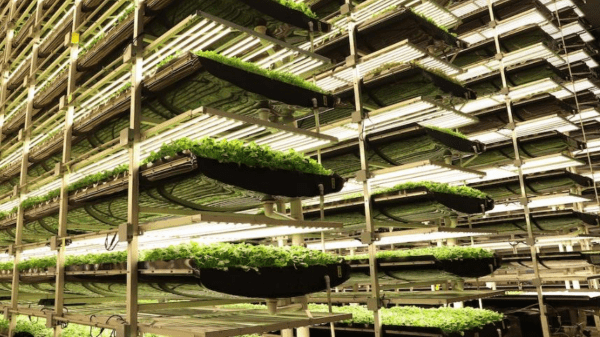It has come to the attention of many that a number of vertical farming operations are failing.
A recent article by Adele Peters in Fast Company looks into the causes.
Her analysis is fascinating and insightful, although I think the problem can be explained in more basic terms: bad business plans.

A good business plan is easy to describe, though hard to enact. You decide that you are going to bring a product—say, leafy greens—to the market. You sit down and calculate how much it will cost to produce one of these items and how many of them you can sell at what price.
Cost analysis includes everything: labor, utilities, real estate, raw materials, transportation, bribes to certain officials (in some countries). Price calculations must factor in the prices of competing products: is your head of romaine going to be cheaper and/or significantly better than what’s already out there?
It is going to cost you a certain amount of money to start your enterprise: startup capital. You will also need money to keep the operation going until it reaches breakeven and then profitability. This rarely occurs in the first two or three years.
The success of your business will depend on the accuracy of your business plan. Some experts say that if you projected reaching breakeven in year 5 and you got there in year 2, your business plan is a failure, because you don’t understand your own market.
You must be rigorously clear-headed about your product. This is easy if it isn’t sexy: someone who reads a business plan for making, say, toilet bowl flappers is not going to be bewitched by the item’s charm.
Unfortunately, as Peters’ article indicates, vertical farming — and broader controlled atmosphere agriculture — is sexy.
Peters writes: “Investors have been drawn to the idea of ‘disrupting’ a 10,000-year-old industry.” (We live in an age when disruption is considered a Good Thing.) One investor was attracted by the idea that the company would “remake the current food system.”
Such distractions can draw investors’ attention from harsher realities. You may want to use robotics in your operation to cut down on labor costs. But you will not get a decent robotics expert for $17.50 an hour. And you’d better be sure that the costs of your expert and the technology are factored into your plan.
Similarly with utilities. “Vertical farms often start growing leafy greens first because they require less light than some other crops,” according to Peters, “but buying the lights, and paying the electric bill, is still a significant expense. Even a small, 10,000-square-foot farm might have a lighting bill over $100,000 or even $200,000 a year.” No doubt: but if you’re horrified when the electric bill shows up, again, you’ve written a lousy business plan.
Analyst Alex Frederick is quoted as saying, “What these companies are running into is that if they’re not going to really achieve breakeven for five or 10 years, they need to be able to keep raising capital to fund operations. And right now, we’re seeing companies really challenged to continue raising.”
One could retort that when you are funding something that won’t reach breakeven for 10 years, you are straying from entrepreneurship into philanthropy. Even so, a business plan that foresaw this eventuality clearly and realistically wouldn’t have to scramble for additional capital two or three years into the project.
In short, the failure of vertical farms is not a matter of technology, markets, or costs. It is a matter of bad business plans.
Oh, I forgot to mention one detail: in your plan, you have to account for the fact that everything is going to cost twice as much and take twice as long as foreseen.



